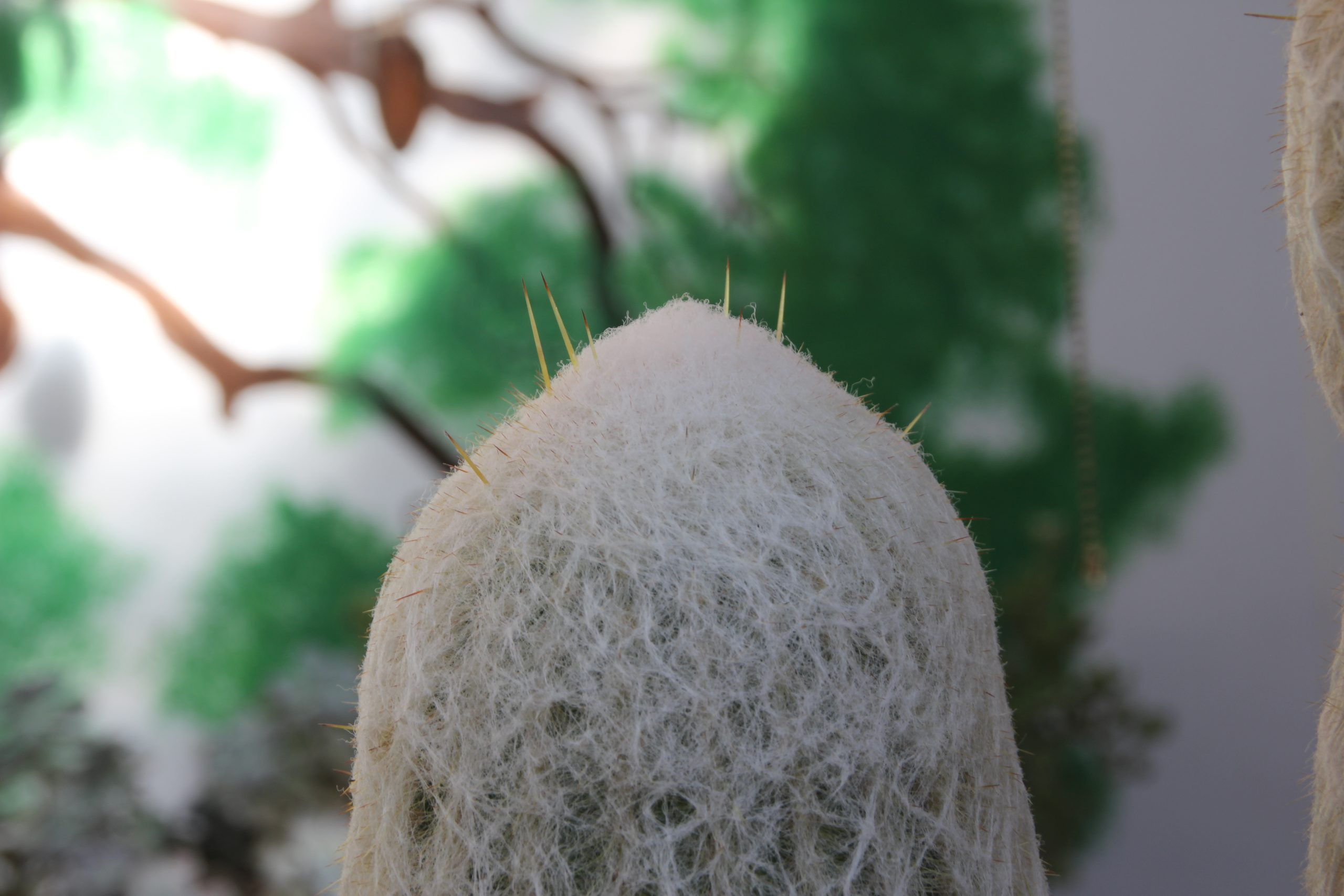I have had my Espostoa melanostele from back in the time when I foolishly failed to keep up with pertinent information on my collection, so that means it has to be over ten years old-well over ten years old. And when I got it, I do remember it was just a clump of two small plants about two inches tall. Now the tallest column is twenty inches tall. They are known to be slow growers, and after ten-plus years, their size now just proves it. But for me, that is a plus because tall cactus get to be hard to handle and at some point, depending on the cactus, grow to the ceiling inside or get too tall to move in through the door for the winter.
Espostoa melanostele is native to Peru and is found in the Andes Mountains in the areas close to the Equator. The plant is covered with white wool that protects the body, and it is the patterns of that wool that make it interesting to me. Look closely at the three trunks and you will see a different pattern on each one. As the two shorter ones grow, the wool may take on the same designs as the tall one, but whether they grow to be different or the same, it makes a really pretty plant.Hidden in that wool are longer, single yellow spines which also give protection to the plant. As the plant ages, the spines turn a darker golden yellow.
Espostoas in their native habitat can grow to be seven feet tall, so I am glad they are slow growers! Another woolier cactus that you might confuse with this one is the Cephalocereus senilis, called the Old Man cactus. It is native to Mexico and can grow to be much taller, so I am glad I have the smaller one. I happen to think mine is the prettier of the two anyway, with its patterned wool instead of long wool that looks like an unkempt hair cut run amuck. The wool is modified spines and also grows out of the areoles on the plant where the typical spines also are found.
They do make a nice big flower, but they have to be pretty big and old to do that, so I will have to wait a while for that to happen. I think it is pretty without any flowers, so I am in no hurry to see it bloom.
You need to be aware there is a mammillaria cactus that is also commonly called an old lady cactus because it grows short wool around its other spines and looks like an old woman with white hair, but it is a very different cactus. This is why regional and common names for cactus can be confusing. You need to learn the botanical name for your specimens as well.
I lost one of the trunks last year in 2022 in our bad hail storm, as you can see here. The damaged trunk didn’t make it, so I cut it off, and in time a new one appeared. It is the small one on the plant today. Most of my cactus were protected from the hailstones by their thicker spines; this one doesn’t have as much protection. And the hailstones were pretty darn big to inflict that much damage.
You can sometimes come across one of these at the big box stores, but not often. So, if you like the wool like I do, waste no time in making the purchase. Give it plenty of sunshine, water well at least once a week, cut back on the water in the winter, and marvel at the wool as it grows.
 And if you take good care of it, it may grow to be seven feet tall!
And if you take good care of it, it may grow to be seven feet tall!



Thank you Alice. You always make me smarter, especially about the care instructions.
You are welcome; my pleasure.
That is very interesting! I love it.
Thanks for reading and commenting, Donna.
Very informative and good read. I just got one and will be my first cactus.